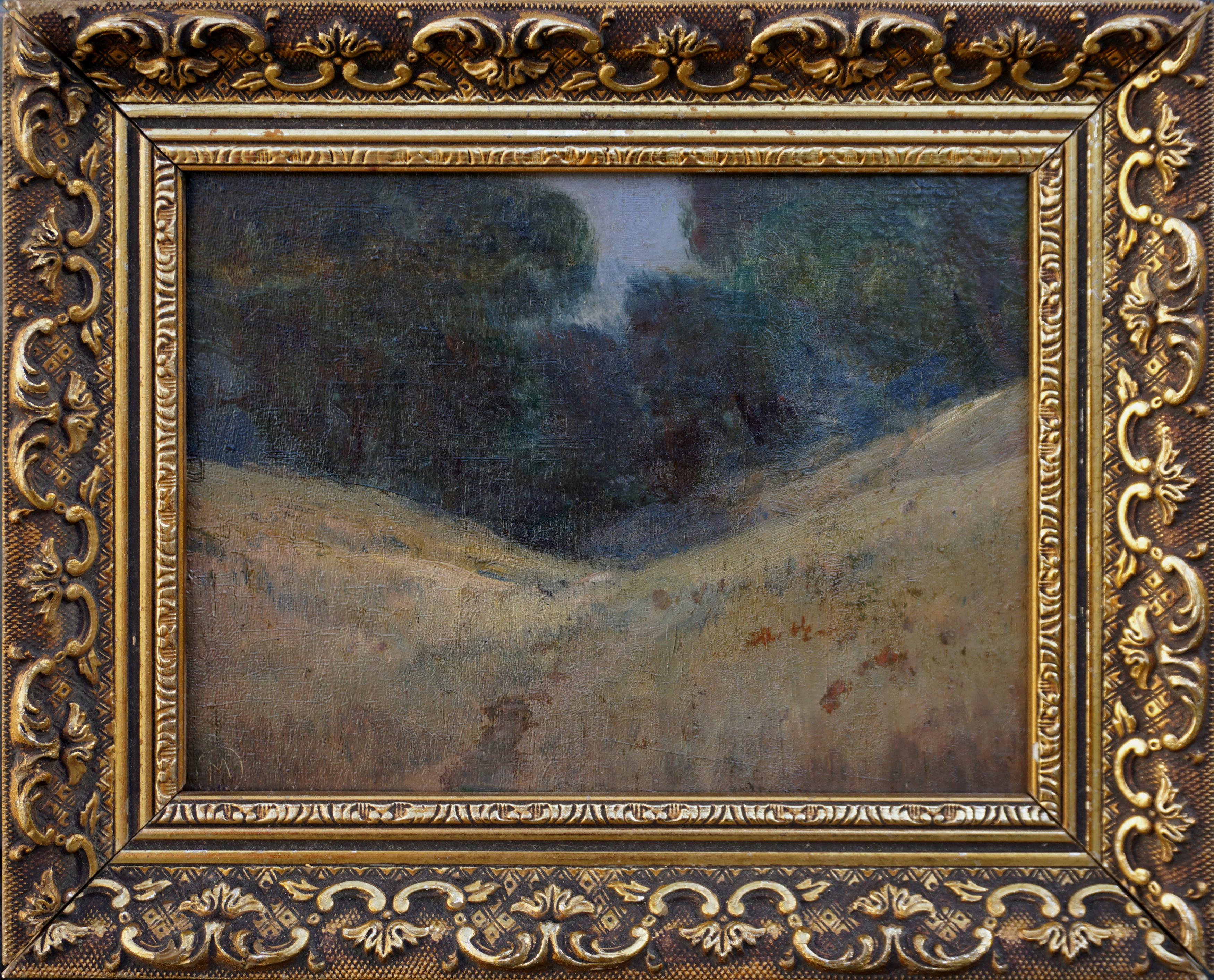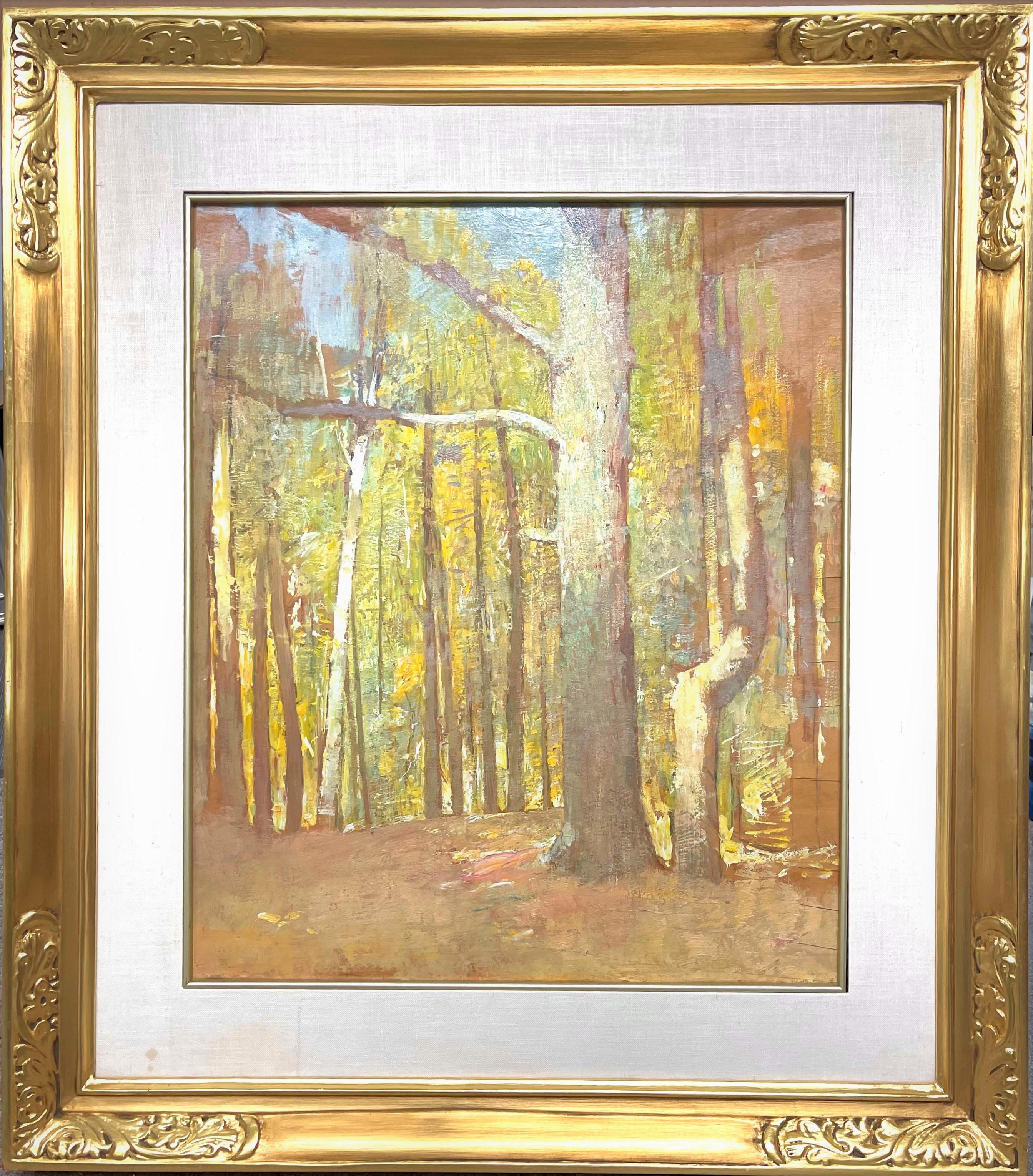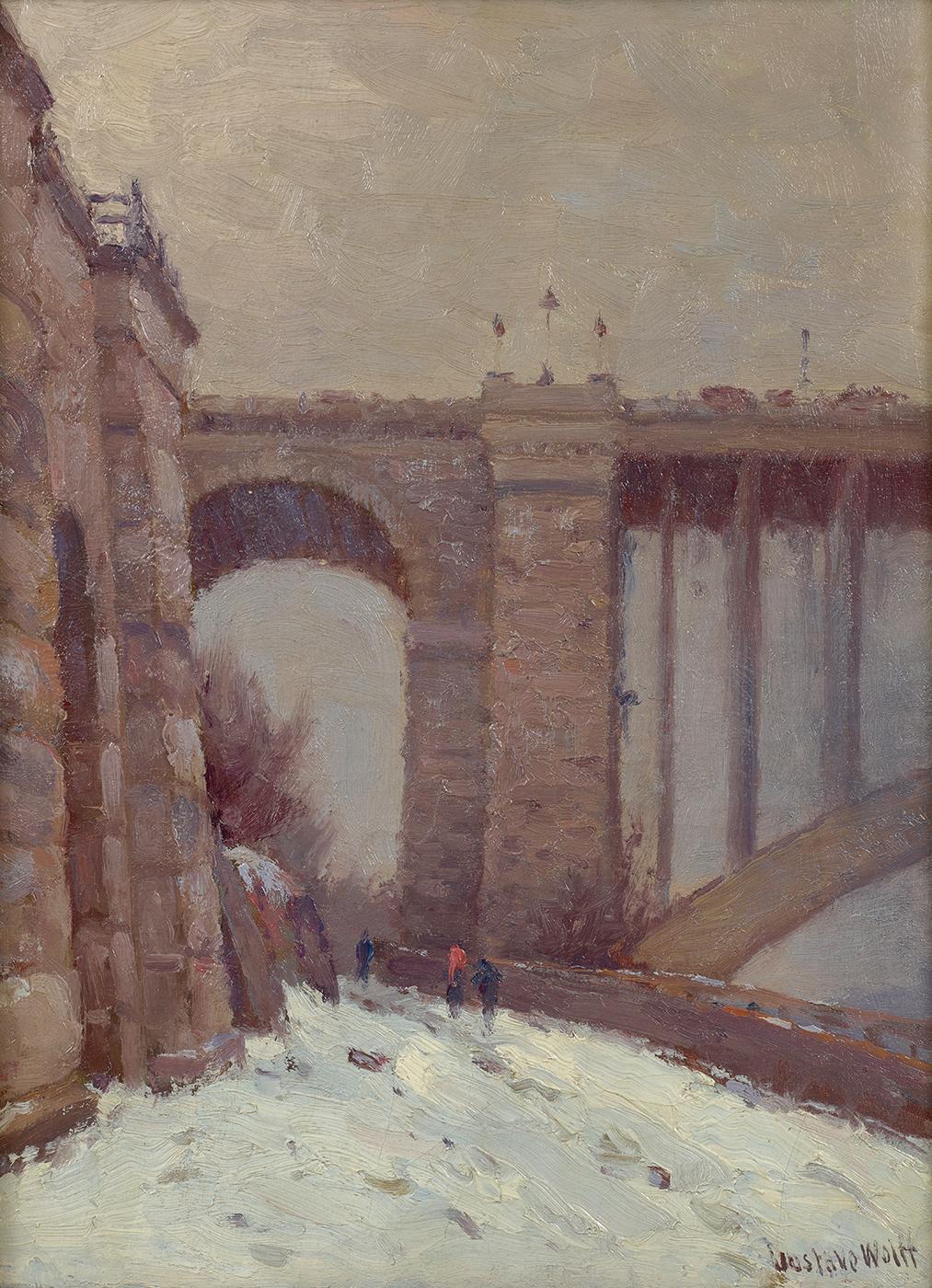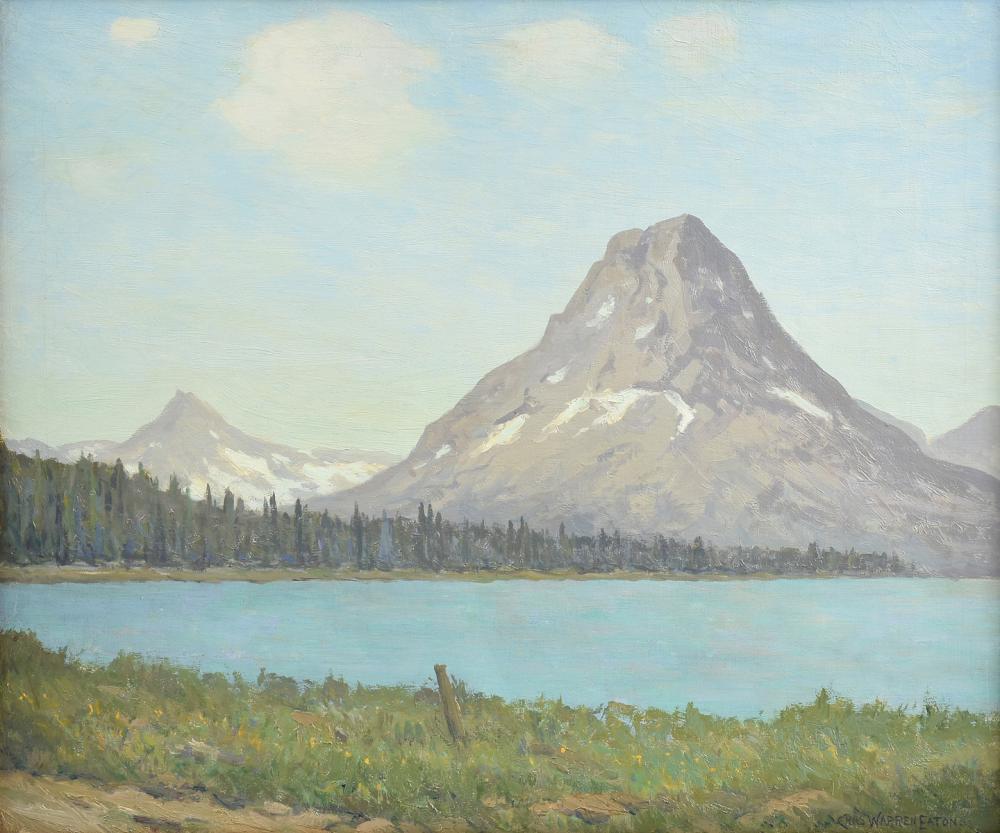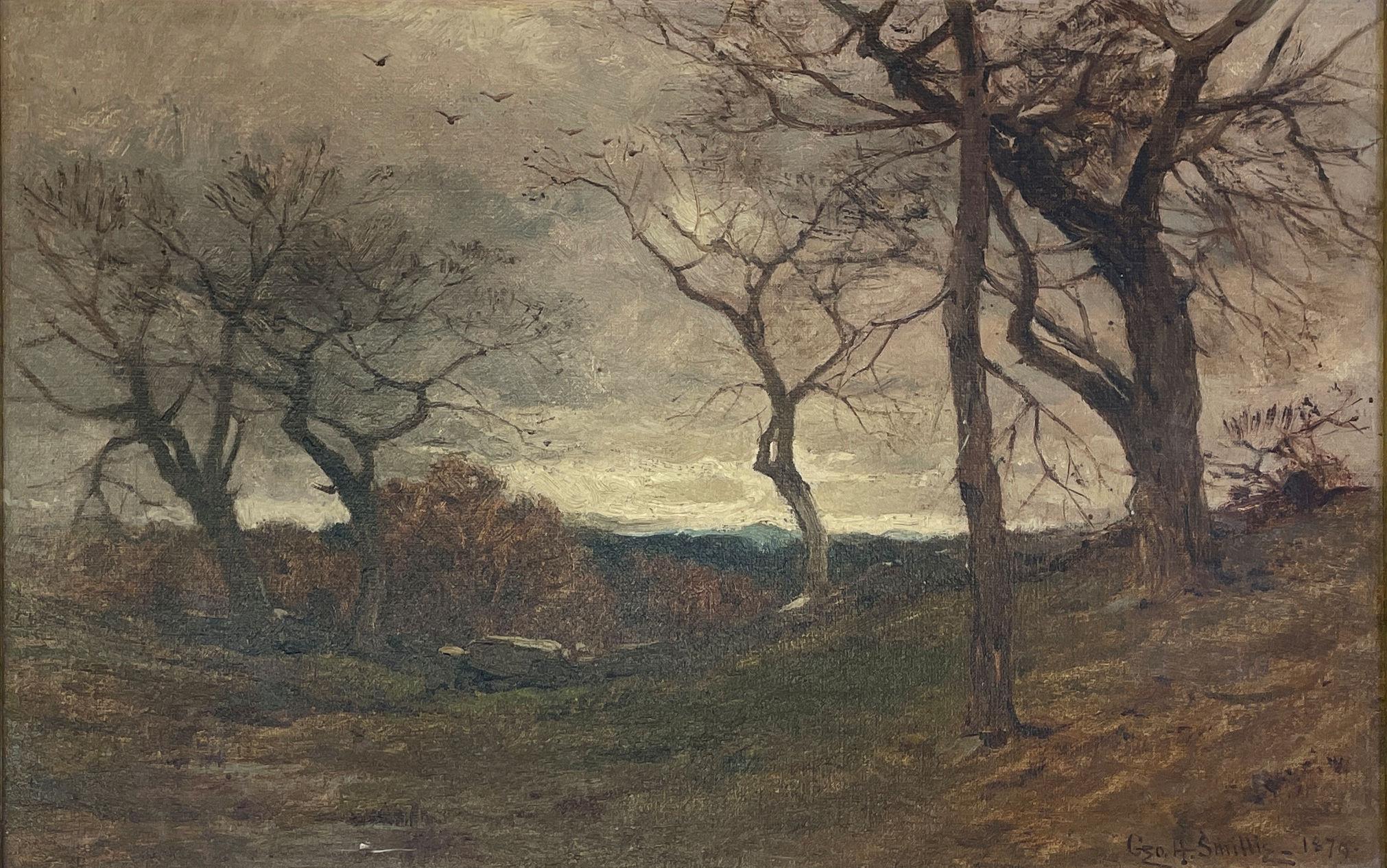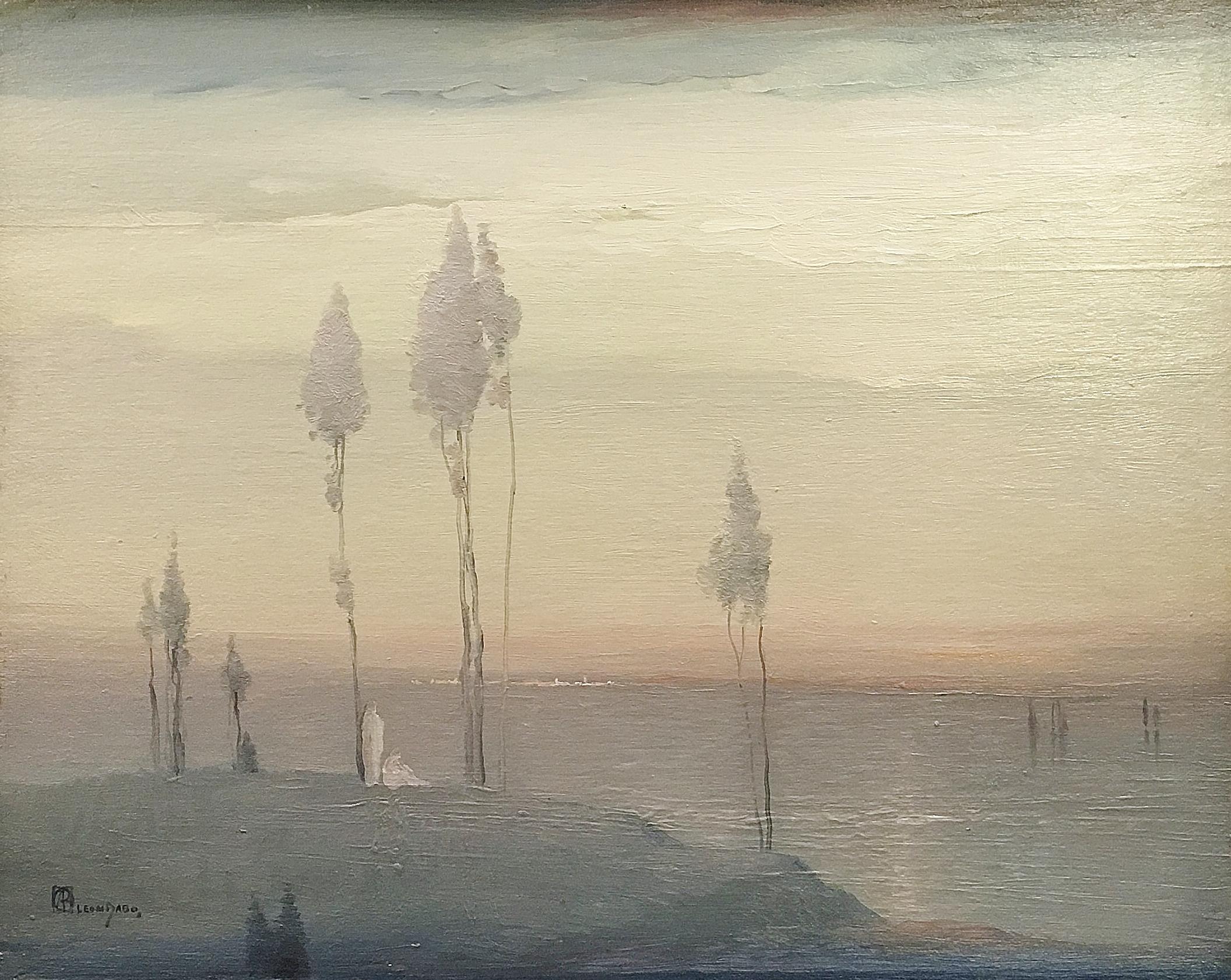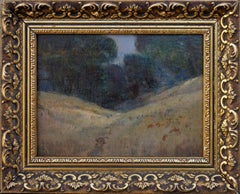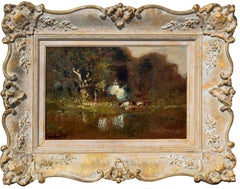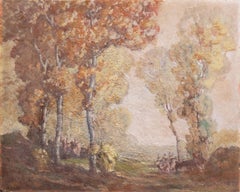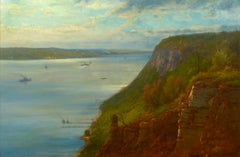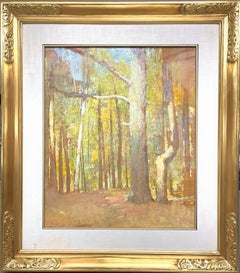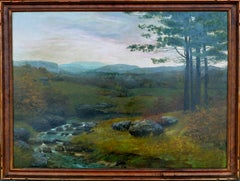
1904 Tonalist Connecticut Landscape
View Similar Items
Want more images or videos?
Request additional images or videos from the seller
1 of 9
H P Piper1904 Tonalist Connecticut Landscape1904
1904
About the Item
About the Seller
5.0
Platinum Seller
These expertly vetted sellers are 1stDibs' most experienced sellers and are rated highest by our customers.
Established in 1986
1stDibs seller since 2014
More From This SellerView All
- Late 19th Century Tonalist Landscape with Oak TreesBy Willard LeRoy MetcalfLocated in Soquel, CAGorgeous late 19th century Tonalist landscape painting of foothills and oak trees in the style of Willard Leroy Metcalf circa 1900. Inscribed "M" in circle monogram lower left corner and on frame verso. Presented in original rustic giltwood frame. Image size: 6"H x 8"W. Framed size: 8.5"H x 10.5"W. Tonalist are usually intimate works, painted with a limited palette. Tonalist paintings are softly expressive, suggestive rather than detailed, often depicting the landscape at twilight or evening, when there is an absence of contrast. Tonalist paintings could also be figurative, but in them, the figure was usually out of doors or in an interior in a low-key setting with little detail. Tonalism had its origins in the works of the French Barbizon school and in the works of American painters who were influenced by them. California Tonalism was born when the emphasis in California landscape painting passed from the grand landscapes of works like those of Thomas Hill and William Keith's early career, to more intimate views of a domesticated landscape. At the same time, the parallel Pictorialist Photography...Category
1890s Tonalist Landscape Paintings
MaterialsOil, Cardboard
$6,800 Sale Price20% Off - Cattle By Pond At Dusk, Mid-19th Century Tonalist Landscape by William KeithBy William KeithLocated in Soquel, CACattle By Pond At Dusk, Mid-19th Century Tonalist Landscape by William Keith Gorgeous mid-19th century landscape painting by William Keith (American, 1838-1911), circa 1860. This impressive Tonalist landscape, titled "In the Woods", depicts cattle beside a pond in the forest at dusk. Keith uses loose, blended brush strokes and a muted earthy palette to create an atmospheric mood that Tonalism is known for. Signed "W. Keith" lower left. Museum label on verso from Santa Barbara Museum of Art. Presented in an antique giltwood frame. Image size: 9"H x 13"W. With frame measures: 16"H x 20"W x 3"D. Provenance: Mrs. Eugene Patterson; Santa Barbara Museum of Art. Authenticity guaranteed and certificate include. Condition: Very good. Cleaning and restoration required signature to be re-touched, original images pre-restoration available. About the Artist: Brought to New York City in 1850, William Keith was apprenticed to a wood engraver in 1856 working for "Harper's" magazine. In 1858 (or 1859) he visited California for "Harper's" and then after a trip to Great Britain, settled in California as an engraver in 1862. He began exhibiting paintings in 1864 in San Francisco where he opened his studio, after having been taught painting by his wife. The Northern Pacific Railroad...Category
Late 19th Century Tonalist Figurative Paintings
MaterialsOil, Cardboard
$3,080 Sale Price20% Off - Late 19th Century Tonalist Rocky Mountain High Camp LandscapeLocated in Soquel, CAWonderful 19th Century tonalist painting of Flat Top Mountain in the Rocky Mountains by unknown artist (American, late 19th-20th Century). Unsigned. Unframed. Size: 16"H x 24"W. T...Category
Early 1900s Tonalist Landscape Paintings
MaterialsCanvas, Oil
- Moonlit Houseboats at Greenbrae Lagoon- Rare Nocturnal L/S, Charles Rollo PetersBy Charles Rollo PetersLocated in Soquel, CA"Houseboats in Moon Light", a rare early 20th century tonalist nocturnal harbor landscape scene at Greenbrae Boardwalk, San Rafael, California by Charles Rollo Peters (American, 1862-1928), 1912. Inscribed "Charles Rollo Peters Greenbrae, 1912" in the lower left corner. Presented in an antique giltwood frame. Image size: 19.5"H x 25.25"W (Note: the photos showing the inscribed signature have been adjusted to show contrast and the artists inscribed signature in other photos enhanced by acrylic over inscription in the oil paint for visibility). Although not noted on verso, the title is taken from two others done the same year at Greenbrae Boardwalk near San Rafael, California. Charles Rollo Peters (American, 1862-1928), called "The Poet of Night", is best known for his Tonalist landscapes, especially nocturnes, with much of his subject matter being scenes around his home in Monterey, California. James McNeill Whistler, who promoted the Tonalist aesthetic in Europe, was a major influence on his painting, and "is reported to have said that Peters was the only artist other than himself who could paint nocturnes." (Gerdts) As Peters matured, his life became increasingly tumultuous, but the one stable part of his existence was his painting. He continued to pour his emotions into his work, creating lonely, mysterious nocturnes with a palette of deep blues and blacks. The scenes were invariably dotted with a speck of light emanating from the moon or a lighted window. His landscapes usually displayed a more prominent sky view and often included a winding path or road trailing off in the distance. Peters was born in San Francisco in 1862 to a wealthy family, and in San Francisco attended Bates Private School for Boys and the City College, where his talent for sketching and painting became obvious and was encouraged. After graduation from the College, he spent time as a commercial artist, but this pursuit did not hold his interest. In the mid 1880s, he began to study privately with Jules Tavernier and also attended classes with Virgil Williams and Christian Jorgensen at the California School of Design. During this period, he painted Bay-Area scenery. In 1886, he began a four-year period of study and travel in Europe, enrolling in Paris at the Ecole des Beaux-Arts and the Academie Julian. His teachers were Jean-Leon Gerome and Fernand Cormon. In San Francisco, where he returned in 1890, he met and married Kathleen Mary Murphy, and the couple immediately departed for an extended trip to England and France. Peters painted the countryside and produced numerous landscape paintings, especially moonlit views of Brittany and Paris---his first nocturnes, encouraged by the aesthetic of Whistler, whose influence was pervasive in England and France. Upon his return to California about 1895, Peters held a large show in San Francisco and was able to sell many of his works. Soon after, he and his family relocated to Monterey, California where Peters became interested in California adobe ruins and missions as subjects for his paintings. Night paintings with rich blues highlighted by moon light became his signature work. Like most Tonalists, he painted in his studio. It was written of him that Monterey residents often saw him "wandering about in the semi-darkness, taking down notes here and there, studying the different phases of light, and creating a vivid mental picture of the scene he wished to paint." (Lowrey 158) In 1899, he made a tour with his collection of paintings through Chicago, Maine, Long Island, and New York City where he held a solo exhibition at the Union Club and received very favorable publicity. One reviewer of the Union Club work wrote: "The artist has studied the atmospheric effect of the night to good purpose, and in the representation of the silvery gray of moonlight he has arrived at singular proficiency." Peters returned to Monterey in 1900, and purchased thirty acres of land where he built an estate. He exhibited in the annual exhibitions of the San Francisco Art Association and the Bohemian Club. Along with William Keith, Xavier...Category
1910s Tonalist Landscape Paintings
MaterialsLinen, Oil
- Autumnal San Francisco Cove and Surf with Whalers Shack circa 1900Located in Soquel, CAAutumnal San Francisco Cove and Surf with Whalers Shack circa 1900 Early California Tonalist painting of the San Francisco Coast and a Whalers Cabin. Possibly by D.A. Fisher (American, 1867-1940). Nocturnal paintings in the late 19th century were very popular in the United States. Condition is stellar and excellent with a period frame having a bit of age yellowing to the finish and the gold leaf filets are beaming. Image, 16"H x 22"D Frame, 22"H x 28"W x 2.5"D Fisher appears to have spent most of his career in Portland, Maine. He was an itinerant artist who painted in the San Francisco Bay area in 1891 and at Mount Shasta...Category
1890s Tonalist Landscape Paintings
MaterialsLinen, Oil
$1,720 Sale Price20% Off - Early Tonalist Landscape -- California Coastal Live Oaks William Schneider 1915Located in Soquel, CAEarly Tonalist Landscape -- California Coastal Live Oaks William Schneider 1915 Beautiful early 20th Century tonalist landscape of California by New York artist William G. Schneider ...Category
1910s Tonalist Landscape Paintings
MaterialsLinen, Oil
You May Also Like
- 'Nymphs at Dusk', Art Nouveau, Arts and Crafts, Tonalist Oil, Three Graces, AICLocated in Santa Cruz, CASigned lower right, 'Emerson' for William C. Emerson (American, 1865-1937) and dated 1910. Original card board, verso, was additionally signed 'W. C. Emerson' and titled, 'The Dance' (images included were taken prior to lay down). Displayed in a period, carved and giltwood frame; framed dimensions: 27.75 x 33.75 x 1.5 inches. Born in London, England, William Emerson...Category
1910s Tonalist Landscape Paintings
MaterialsCardboard, Oil, Masonite
- Palisades on the HudsonBy George InnessLocated in New York, NYSigned lower right: G. InnessCategory
19th Century Tonalist Landscape Paintings
MaterialsOil
- Emil Carlsen American Impressionist landscape oil Painting Salmagundi ClubBy Soren Emil CarlsenLocated in Chesterfield, NJYellow Landscape/Wood Interior/Birch Forest 3 different titles on 3 labels DESCRIPTION Yellow Landscape oil /panel bears Florence G. Carlsen Estate stamp on Brett Mitchell Collecti...Category
Early 20th Century Tonalist Landscape Paintings
MaterialsOil
- High Bridge, New YorkBy Gustave WolffLocated in New York, NYSigned lower right: Gustave WolffCategory
20th Century Tonalist Landscape Paintings
MaterialsOil
- Winter RooftopsBy Gustave WolffLocated in New York, NYSigned lower right: Gustave WolffCategory
20th Century Tonalist Landscape Paintings
MaterialsOil
$13,500 - "Mount Rockwell, Glacier National Park, Montana, " Mountain Lake Landscape ViewBy Charles Warren EatonLocated in New York, NYCharles Warren Eaton (1857 – 1937) The Shadow of Mount Rockwell, Glacier National Park, Montana, 1921 Oil on canvas 20 x 24 inches Signed lower right: CHAS WARREN EATON. Provenance: The artist The Macbeth Gallery, New York Private Collection Sotheby's New York, American Art, April 14, 1989 ConocoPhillips, Houston Simpson Galleries, Houston, Fine Art & Antiques, May 18, 2019, Lot 447 Exhibited: New York, The Macbeth Gallery, Paintings of Glacier National Park by Charles Warren Eaton, December 13, 1921 - January 2, 1922, no. 2. Literature: "Two Exhibitions at Macbeth's," American Art News, New York, Vol. XX, No. 10, December 17, 1921. A contemporary critic wrote that the paintings of Charles Warren Eaton appeal to “the dreamers who find in them the undiscovered scenes in which their fancy long has dwelt.” Eaton’s contemplative landscapes exude a spiritual quality that moves the observer into a similar frame of mind. He loved to depict the ethereal light of dawn and dusk in late autumn or winter, usually without any reference to human or animal figures or buildings. These Tonalist paintings, with their subdued palette and relatively intimate scale, marked a definite break with the fading popularity of the panoramic and romantic views of the Hudson River School painters. Charles Warren Eaton was born in Albany, New York to a family of limited means. He began painting while working in a dry-goods store. At age 22, he enrolled at the National Academy of Design in New York City and then studied figure painting at the Art Students League. By 1886, he was successful enough to quit his day job and make a living as a landscape painter. That year, he traveled to Europe with fellow Tonalist painters Leonard Ochtman and Ben Foster. In France, Eaton visited popular artist’s spots such as Paris, Fontainebleau and Grez-sur-Loing, and fell in love with the loose brushwork and moody style of French Barbizon painting. Returning to the United States, Eaton fell under the spell of George Inness, the foremost exponent of Barbizon style in the United States. In 1888, Eaton settled near Inness in Bloomfield, New Jersey, where Eaton lived until his death in 1937. In this period, he painted shadowy and ambiguous landscapes inspired by rural scenery in the northeastern United States. His signature theme was a cropped view of the branches, trunks, and foliage of a pine grove silhouetted against a delicately illuminated sunset or moonlit sky. He painted this vision so often between 1900 and 1910 that he picked up the sobriquet ‘‘The Pine Tree Painter.” After 1910, Eaton responded to the popularity of Impressionism by using brighter colors and painting sunlit daytime scenes. In 1921, he was hired to paint Glacier Lake, in Glacier National Park by the Great Northern Railroad Company as part of their ‘See America First’ campaign. He produced more than 20 paintings, among the artist's last works, that now poignantly remind viewers of the vast disappearing glaciers. Eaton tended to approach this mountain scenery from an oblique vantage point; he liked to capture small episodes, showing mountaintops nearly obscured by dramatically attenuated screens of fir trees. Eaton, like many Tonalist artists of his generation such as Henry Ward Ranger, John Francis Murphy, and Charles Melville Dewey...Category
1920s Tonalist Landscape Paintings
MaterialsCanvas, Paint, Oil
